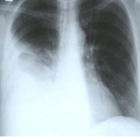Table of Contents
Dry eye syndrome: Therapeutic challenges and future trends
Published on: 12th December, 2019
OCLC Number/Unique Identifier: 8500737592
Introduction: Intense Pulsed Light (IPL) is the therapeutic tool implemented in the treatment of dry eye, characterized by the emission of waves of 500-1200nm in the region of the upper and lower eyelids. Dry eye is a recurring complaint in ophthalmology offices and has an impact on the patient’s quality of life. It results from dysfunction of the meibomian glands, duct obstruction, and quantitative and qualitative changes in glandular secretion. It is manifested by dryness and irritation, foreign body sensation, burning, tearing, and eye fatigue. The available treatments are short term palliative with unsatisfactory results.
An evaluation of visual outcome of corneal injuries in a tertiary care hospital
Published on: 9th September, 2019
OCLC Number/Unique Identifier: 8257071970
Background: Corneal injuries are significant contributors to blindness. Cornea being the most anterior structure of eye is exposed to various hazards like airborne debris and blunt trauma. By understanding different types of injuries to which cornea is exposed, the practitioner maybe more capable in managing injuries to minimise structural and visual sequelae.
Objectives: To study various patterns of corneal injuries and its visual outcome among patients of ocular trauma in a tertiary care hospital.
Methods: Study of 100 cases of corneal injuries wherein patients were treated according to injury type and followed up for 4 months. Results: Majority of patients belonged to working population between age groups 21-65 years. Most patients suffered from corneal abrasions while the least common were perforating and lacerating injuries. Alkali injuries were more common than acid injuries. Most patient presented within 24 hours and had only epithelial defects. Therefore, the number of patients receiving conservative management was higher than those receiving surgical intervention.
Conclusion: Most common causes of blindness and low vision in our study was full thickness corneal laceration and corneal abrasions, foreign body injuries affecting the pupillary area and involving anterior or mid stroma causing nebular or macular grade opacities hampering vision.
Unilateral retinitis pigmentosa: Case report and review of the literature
Published on: 22nd August, 2019
OCLC Number/Unique Identifier: 8257070048
Significance: Due to the limited number of reported cases little is known about the characteristics of unilateral retinitis pigmentosa. Information from additional case reports can aid in learning more about the condition. We report a case of retinitis pigmentosa that has remained unilateral for 28 years and review the available literature.
Case Report: A 40-year-old Caucasian female presented for an opinion as to the cause of her vision loss. Fundus autofluorescence demonstrated hypoautofluorescence in the midperipheral retina and a hyperautofluorescent ring surrounding the area of preserved photoreceptors in the macula. Optical coherence tomography showed disruption of the ellipsoid zone and the external limiting membrane. Electroretinography (ERG) showed severely reduced rod and cone function monocularly.
Discussion: Retinitis pigmentosa is typically bilateral and symmetric. Unilateral retinitis pigmentosa is a rare condition that manifests with only one eye having changes typical of retinitis pigmentosa. The unaffected eye can have no signs of retinitis pigmentosa and must have a normal ERG after long-term follow up. It is critical to rule out inflammatory, traumatic, toxic, and cancer associated retinopathy that can present with retinal pigmentary changes. Unilateral retinitis pigmentosa generally remains unilateral, but long-term follow up with ERG is important. There is currently no treatment that can stop the process of retinitis pigmentosa, but gene therapy shows promise.
Wound architectural analysis of 1.8mm microincision cataract surgery using spectral domain OCT
Published on: 12th August, 2019
OCLC Number/Unique Identifier: 8216115991
Purpose: Analyze Microincision Cataract surgery wound using Fourier-Domain optical coherence tomography.
Setting: Medical School of Medicine, Catholic University of Brasilia, Brasília, Brazil.
Design: Prospective comparative observational study
Methods: Forty eyes were included in this prospective study divided in two groups: with contact lens (CL) and without contact lens (WCL). A line scan pattern of the corneal incisions were acquired using a Spectral domain OCT system immediately after the surgery, and at postoperative days 1, 7 and 30. Incisions were analyzed regarding length, location, angle, architecture, and anatomic imperfections.
Results: All incisions were located temporal or nasal superiorly. The average wound length was 1.28 + 0.18mm and the mean incision angle was 49 + 9 degrees. The average wound length of the WCL group mean was 1.24 + 0.17 mm and the mean incision angle was 51 + 8 degrees. Comparing groups for the length and the angle, the incisions measurements were not statistically significant. Anatomic imperfections were observed at the first day postoperative in 12 eyes for CL group and in 13 eyes for the WCL group. No patient presented endophthalmitis during the follow-up.
Conclusion: Epithelial imperfection was observed in two patients in the WCL group with spontaneous resolution. The CL group had the highest length and lowest angle of corneal incision. Using contact lens to prevent wound construction imperfection appears not to be a good option. Further studies using a greater number of patients with an architectural analysis of clear corneal incisions are needed to confirm these preliminary results.

HSPI: We're glad you're here. Please click "create a new Query" if you are a new visitor to our website and need further information from us.
If you are already a member of our network and need to keep track of any developments regarding a question you have already submitted, click "take me to my Query."
















































































































































